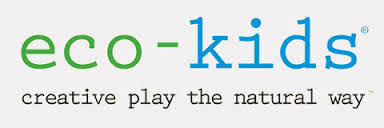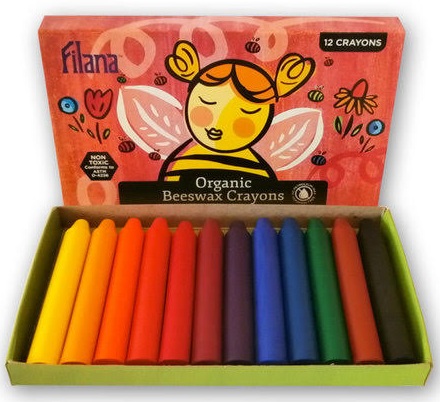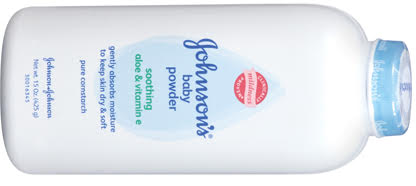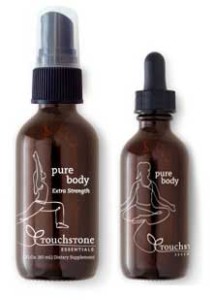
Art | Resources
Unfinished Furniture Expo
 Unfinished furniture in more styles than I usually see on unfinished furniture websites. Check this site to find something different. Search by type of furniture and also by style. “At Unfinished Furniture Expo, you can find an assortment of furniture pieces, all made with a variety of wood. The pieces include tables, table pedestals, table tops, chairs, dining tables, coffee tables, kitchen furniture, beds, headboards, entertainment centers, desks, bookcases, bookshelves, and even chairs and tables for children. These pieces can be found in alder, birch, pine, parawood, and oak. We offer all of our pieces as discounted unfinished furniture, inclusive of free shipping on orders over $39.”
Unfinished furniture in more styles than I usually see on unfinished furniture websites. Check this site to find something different. Search by type of furniture and also by style. “At Unfinished Furniture Expo, you can find an assortment of furniture pieces, all made with a variety of wood. The pieces include tables, table pedestals, table tops, chairs, dining tables, coffee tables, kitchen furniture, beds, headboards, entertainment centers, desks, bookcases, bookshelves, and even chairs and tables for children. These pieces can be found in alder, birch, pine, parawood, and oak. We offer all of our pieces as discounted unfinished furniture, inclusive of free shipping on orders over $39.”
Organic Mattress encasement for Dust Mites

Question from Sherry
Hi Debra,
Per your recommendation, I have purchased a Naturepedic mattress and want to find a mattress encasement to protect the mattress and prevent dust mites. Can you please recommend a mattress encasement.
I see that Naturepedic offers a waterproof mattress pad, but it does not encase the entire mattress. Also, I can concerned about the Naturepedic mattress protector because it has a layer of polyurethane for its waterproofing. I have recently learned that polyurethane foam is toxic and am in the process of trying to remove it from my house. Should I be concerned about the polyurethane in Naturepedic’s mattress pad? Thank you again for all of your help and support! You are an inspiration!
Debra’s Answer
Polyurethane itself is NOT toxic, polyurethane FOAM is toxic because of other chemicals added to it to make foam and to make it fireproof. So no problem with the very thin membrane of polyurethane in Naturepedic’s mattress protector pad.
Here are some recommendations for mattress encasements that protect against dust mites. They are not waterproof.
THE CLEAN BEDROOM Organic Cotton Dust Mite Mattress Encasement
JANICE’S Organic Cotton Barrier Cloth Mattress Covers
JANICE’S Organic Cotton Mattress Covers
Toxicity of 3D Printing

You may have heard of a new type of printing called “three-dimensional (3D) printing.” Instead of printing ink on a piece of paper or plastic, the 3D printer actually makes a three-dimensional object. These printers are now available for home computers (starting at only $283), so you can now manufacture virtually any shape for any use right in your own home.
When I first saw this on TV several years ago, once I got over my disbelief my first question was, “What material are they using to make these objects and is it toxic?
Recently others have been asking this question too, and there is starting to be some research results to look at.
The majority of desktop 3D printers designed for the consumer market use a technology called fused filament fabrication (FFF), also known as molten polymer deposition (which sounds more descriptive to me). In this process, a slender thread of solid thermoplastic is melted and deposited in thin layers onto a moving bed. The three-dimensional solid shape is formed layer-by-layer as the plastic material cools and hardens. That makes logical sense to me, but the first time I saw it, it looked like magic.
A wide variety of filament materials are now being used in desktop FFF 3D printers, including
- acrylonitrile butadiene styrene (ABS)
- poly(lactic acid) (PLA)
- poly(vinyl alcohol) (PVA)
- polycarbonate (PC)
- high-density polyethylene (HDPE)
- high-impact polystyrene (HIPS)
- nylon
- and many other polymers, metals, ceramics, and other materials.
Filaments are melted at a variety of extruder nozzle temperatures and bed temperatures, and manufacturers typically recommend ranges of optimal temperatures for each filament material and thickness. These varying temperatures affect the amount of volatile organic chemicals (VOCs) and particles that might be released from the materials as well as their toxicity.
Two studies have generated quite a lot of data on this subject, which I’m not going to attempt to summarize here.
I just do want to mention that one study identified gasses that were released, which included ammonia, cyanidric acid, phenol, and benzene, among others.
Overall, lab tests showed that ABS is significantly more toxic than PLA, but the corn-based PLA had it’s own emissions when extruded at temperatures higher than 392 degrees F. This is important to note because there are many finished consumer products made from PLA that would not have emissions because they are at room temperature.
It was also noted that the same material spools, when acquired from different resellers, release very different quantities of VOCs, even if used in the same 3D printer and under the same parameters of speed and temperature. So there is a wide variation of air pollutants that could be present as the result of using a 3D printer.
Health effects mentioned were pulmonary problems, such as bronchitis, tracheitis, and asthma. In some cases, outgassing substances were known cause certain types of cancers.
Researchers recommend using 3D printers in a well-ventilated area.
3D PRINTING INDUSTRY: How Toxic are ABS & PLA Fumes?
3D PRINTING INDUSTRY: Gas evolution during FDM 3D printing and health impact
Color Kitchen
 “Naturally vibrant food colors…artificial dye-free, plant-based, vegan, gluten-free, and non-GMO,” developed by a woman who has long suffered from food allergies and chemical additives in products.
“Naturally vibrant food colors…artificial dye-free, plant-based, vegan, gluten-free, and non-GMO,” developed by a woman who has long suffered from food allergies and chemical additives in products.
Glob Color
 “Artists have been using fruit, vegetable, and herb pigments to mix paint since ancient times. Glob channels that age-old method with vibrant paints that yield bright and beautiful colors when mixed with water.” Watercolor paints and non-nano face paint. Watercolor and face paints make with plant pigments. ” Glob paints are made from food-grade ingredients, so they are as safe as possible for little ones to play with.” They also sell ColorKitchen “naturally vibrant food colors…artificial dye-free, plant-based, vegan, gluten-free, and non-GMO,” developed by the same woman.
“Artists have been using fruit, vegetable, and herb pigments to mix paint since ancient times. Glob channels that age-old method with vibrant paints that yield bright and beautiful colors when mixed with water.” Watercolor paints and non-nano face paint. Watercolor and face paints make with plant pigments. ” Glob paints are made from food-grade ingredients, so they are as safe as possible for little ones to play with.” They also sell ColorKitchen “naturally vibrant food colors…artificial dye-free, plant-based, vegan, gluten-free, and non-GMO,” developed by the same woman.
Eco-Kids
 A family run business that produces
A family run business that produces
a line of art supplies that gives children the tools to create using non-toxic, natural ingredients and environmentally friendly packaging. Eco-dough, eco-finger paint, eco-egg coloring, eco-crayons and more are made from all natural ingredients. Dyes are FDA-approved natural dye. Paints are colored with natural and organic fruit, plant and vegetable extracts from annatto seed, blue shade vegetable, curcumin, purple sweet potato, red cabbage, rice flour, earth clay. These products are sold in many stores as well as online.
Filana Organic Beeswax Crayons
 “Awesome crayons” made with “lots of organic beeswax…Filana™ crayons are made with natural waxes and over 25% certified organic beeswax. We never use petroleum waxes or paraffin. All our ingredients are GMO free. Filana™ crayons contain a special blend of organic and natural petroleum-free waxes, FDA-approved organic and inorganic pigments, and kaolin clay. Filana™ crayons conform to ASTM D-4236 standard, which indicates Filana™ crayons are certified nontoxic and meet or exceed specific quality standards. Filana™ crayons are CPSIA compliant. They have been tested by an independent laboratory and are certified to be compliant with the the CPSIA (Consumer Product Safety Improvement Act). Each one of our crayons is hand-crafted in Langley, Washington. Our crayons are 100% made in the US.”
“Awesome crayons” made with “lots of organic beeswax…Filana™ crayons are made with natural waxes and over 25% certified organic beeswax. We never use petroleum waxes or paraffin. All our ingredients are GMO free. Filana™ crayons contain a special blend of organic and natural petroleum-free waxes, FDA-approved organic and inorganic pigments, and kaolin clay. Filana™ crayons conform to ASTM D-4236 standard, which indicates Filana™ crayons are certified nontoxic and meet or exceed specific quality standards. Filana™ crayons are CPSIA compliant. They have been tested by an independent laboratory and are certified to be compliant with the the CPSIA (Consumer Product Safety Improvement Act). Each one of our crayons is hand-crafted in Langley, Washington. Our crayons are 100% made in the US.”
$417 Million Awarded in Baby Powder Suit—Talc Connection to Cancer

On Monday a Los Angeles jury ordered Johnson & Johnson to pay $417 million in damages to a woman who developed ovarian cancer after using their trademarked baby powder for decades.
Many women use baby powder in their genital area for the same reason it’s used for babies.
Studies linking talc to cancer date back to 1971, when particles of talc were found embedding in ovarian and vertical tumors.
In 2006 the International Agency for Research on Cancer classified talcum powder as a possible human carcinogen if used in the female genital area. No efforts have been made to remove this product from the market or require warning labels.
Talc is a naturally occurring clay mineral composed of magnesium and silicon. It occurs in proximity to asbestos. While talc itself does not cause cancer, it is often contaminated with bits of asbestos. a known human carcinogen.
If you use baby powder, choose a brand made with cornstarch or other ingredients instead of talc.
THE NEW YORK TIMES: $417 Million Awarded in Suit Tying Johnson’s Baby Powder to Cancer
Women of Color Exposed to More Toxic Chemicals in their Beauty Products than white women

According to a commentary published last week in the American Journal of Obstetrics and Gynecology, women of color have higher levels of chemicals in their bodies related to exposure through beauty products than white women. The authors say even small exposures to these toxic chemicals can lead to health problems.
“Pressure to meet Western standards of beauty means Black, Latina and Asian American women are using more beauty products and thus are exposed to higher levels of chemicals known to be harmful to health,” says Ami Zota, ScD, MS, an assistant professor of environmental and occupational health at Milken Institute School of Public Health (Milken Institute SPH) at the George Washington University.
Mercury in Processed Foods and Other “Indirect Additives” in Manufactured Food Products
This week a video arrived in my email inbox about a study in which mercury was found in a number of processed foods contain high fructose corn syrup.
They don’t intentionally add mercury to high fructose corn syrup, but it is an “indirect additive” that enters food as a result of processing natural corn into the industrial product high fructose corn syrup.
Watch this video for more about mercury in high fructose coren syrup
But mercury isn’t the only indirect additive found in processed foods.
The US Food & Drug Administration (FDA) has a whole of indirect additives at
List of Indirect Additives Used in Food Contact Substances
You can view the list of 3227 chemicals that are allowed in processed food products at the above link, and also search on chemicals you know to see if they are on the list. Formaldehyde is on the list, and so are styrene, phthalates, polyurethane resins, and many more chemicals we know to be toxic.
And none of these indirect additives are required to be on the packaged food label.
According to the FDA:
indirect food additives…are substances used in food-contact articles, and include:
- adhesives and components of coatings (Part 175)
- paper and paperboard components (Part 176)
- polymers (Part 177) and
- adjuvants and production aids (Part 178).
In general, these are substances that may come into contact with food as part of packaging or processing equipment, but are not intended to be added directly to food.
Additional “indirect” additives that are effective as part of the food contact substance notification program or that are exempted from regulation as food additives in accordance with 21 CFR 170.39 “Threshold of Regulation (TOR) exemptions for substances used in food-contact articles.” are listed in separate inventories.
This is why we need to grow or purchase our own raw foods and prepare them ourselves at home. Doing so eliminates all these indirect additives that enter foods through industrial processing.
YOU CAN’T ESCAPE MERCURY. THAT’S WHY I DETOX FOR MERCURY EVERY DAY.

Mercury is in many products we use every day and even in the outdoor air. We can’t escape it. So it’s likely that your body has built up a store of mercury and possibly other heavy metals that could be affecting your health.
Once mercury and other heavy metals enter your body, it is very difficult for your body to remove them.
That’s why I take PureBody Liquid Zeolite every day. This natural mineral is uniquely suited to remove heavy metals. Tiny bits of negatively-charged zeolite act like little magnets to attract positively-charged particles—which include 99.9% of heavy metals, radiation, and organic chemicals–so they can be removed from your body via your kidneys. It’s simple, effective, and affordable.






